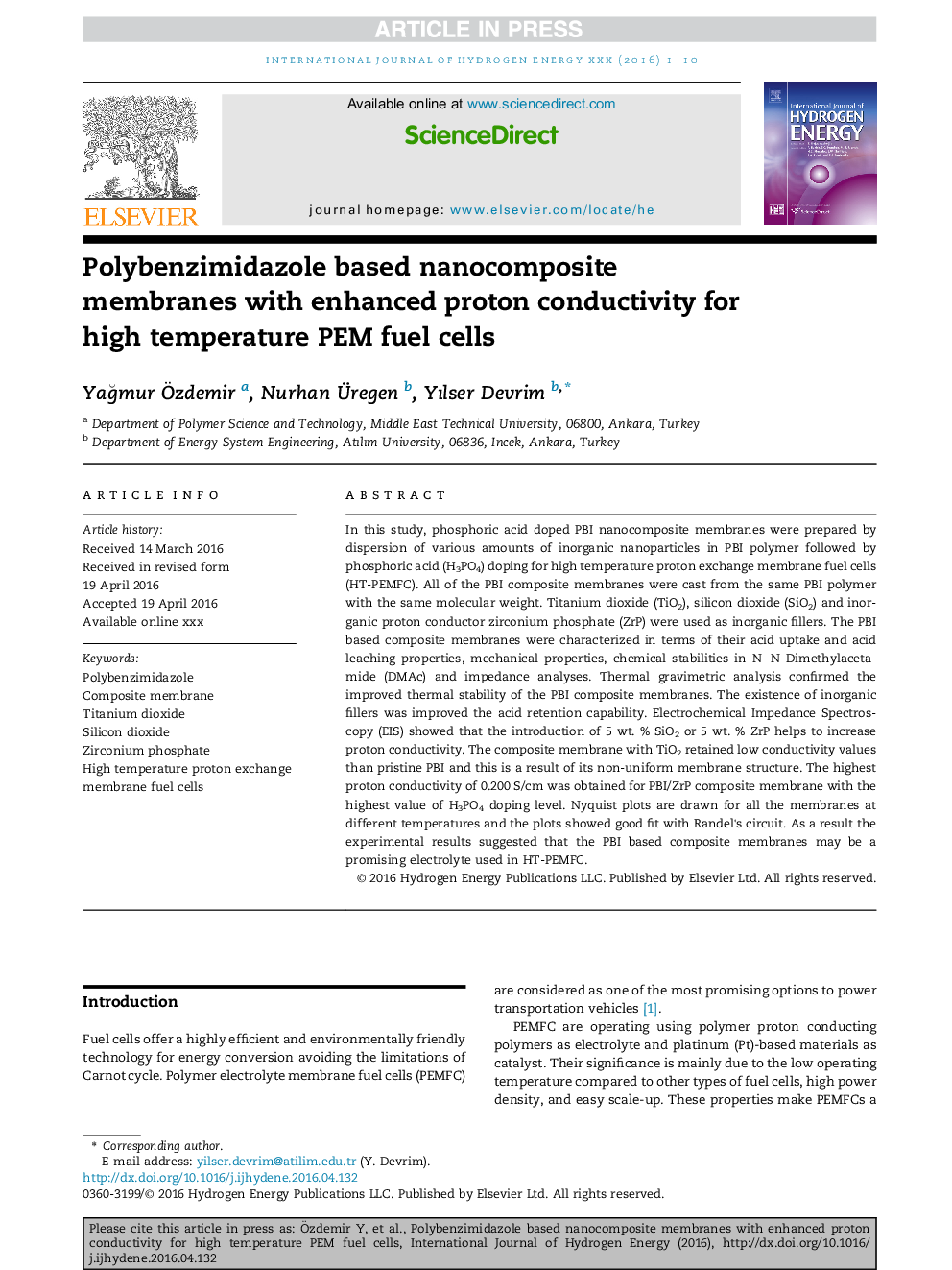| Article ID | Journal | Published Year | Pages | File Type |
|---|---|---|---|---|
| 5146562 | International Journal of Hydrogen Energy | 2017 | 10 Pages |
Abstract
In this study, phosphoric acid doped PBI nanocomposite membranes were prepared by dispersion of various amounts of inorganic nanoparticles in PBI polymer followed by phosphoric acid (H3PO4) doping for high temperature proton exchange membrane fuel cells (HT-PEMFC). All of the PBI composite membranes were cast from the same PBI polymer with the same molecular weight. Titanium dioxide (TiO2), silicon dioxide (SiO2) and inorganic proton conductor zirconium phosphate (ZrP) were used as inorganic fillers. The PBI based composite membranes were characterized in terms of their acid uptake and acid leaching properties, mechanical properties, chemical stabilities in NN Dimethylacetamide (DMAc) and impedance analyses. Thermal gravimetric analysis confirmed the improved thermal stability of the PBI composite membranes. The existence of inorganic fillers was improved the acid retention capability. Electrochemical Impedance Spectroscopy (EIS) showed that the introduction of 5Â wt. % SiO2 or 5Â wt. % ZrP helps to increase proton conductivity. The composite membrane with TiO2 retained low conductivity values than pristine PBI and this is a result of its non-uniform membrane structure. The highest proton conductivity of 0.200Â S/cm was obtained for PBI/ZrP composite membrane with the highest value of H3PO4 doping level. Nyquist plots are drawn for all the membranes at different temperatures and the plots showed good fit with Randel's circuit. As a result the experimental results suggested that the PBI based composite membranes may be a promising electrolyte used in HT-PEMFC.
Keywords
Related Topics
Physical Sciences and Engineering
Chemistry
Electrochemistry
Authors
YaÄmur Ãzdemir, Nurhan Ãregen, Yılser Devrim,
